Alper Yilmaz
Lightweight Road Environment Segmentation using Vector Quantization
Apr 19, 2025Abstract:Road environment segmentation plays a significant role in autonomous driving. Numerous works based on Fully Convolutional Networks (FCNs) and Transformer architectures have been proposed to leverage local and global contextual learning for efficient and accurate semantic segmentation. In both architectures, the encoder often relies heavily on extracting continuous representations from the image, which limits the ability to represent meaningful discrete information. To address this limitation, we propose segmentation of the autonomous driving environment using vector quantization. Vector quantization offers three primary advantages for road environment segmentation. (1) Each continuous feature from the encoder is mapped to a discrete vector from the codebook, helping the model discover distinct features more easily than with complex continuous features. (2) Since a discrete feature acts as compressed versions of the encoder's continuous features, they also compress noise or outliers, enhancing the image segmentation task. (3) Vector quantization encourages the latent space to form coarse clusters of continuous features, forcing the model to group similar features, making the learned representations more structured for the decoding process. In this work, we combined vector quantization with the lightweight image segmentation model MobileUNETR and used it as a baseline model for comparison to demonstrate its efficiency. Through experiments, we achieved 77.0 % mIoU on Cityscapes, outperforming the baseline by 2.9 % without increasing the model's initial size or complexity.
UAS Visual Navigation in Large and Unseen Environments via a Meta Agent
Mar 20, 2025Abstract:The aim of this work is to develop an approach that enables Unmanned Aerial System (UAS) to efficiently learn to navigate in large-scale urban environments and transfer their acquired expertise to novel environments. To achieve this, we propose a meta-curriculum training scheme. First, meta-training allows the agent to learn a master policy to generalize across tasks. The resulting model is then fine-tuned on the downstream tasks. We organize the training curriculum in a hierarchical manner such that the agent is guided from coarse to fine towards the target task. In addition, we introduce Incremental Self-Adaptive Reinforcement learning (ISAR), an algorithm that combines the ideas of incremental learning and meta-reinforcement learning (MRL). In contrast to traditional reinforcement learning (RL), which focuses on acquiring a policy for a specific task, MRL aims to learn a policy with fast transfer ability to novel tasks. However, the MRL training process is time consuming, whereas our proposed ISAR algorithm achieves faster convergence than the conventional MRL algorithm. We evaluate the proposed methodologies in simulated environments and demonstrate that using this training philosophy in conjunction with the ISAR algorithm significantly improves the convergence speed for navigation in large-scale cities and the adaptation proficiency in novel environments.
HyperGLM: HyperGraph for Video Scene Graph Generation and Anticipation
Nov 27, 2024Abstract:Multimodal LLMs have advanced vision-language tasks but still struggle with understanding video scenes. To bridge this gap, Video Scene Graph Generation (VidSGG) has emerged to capture multi-object relationships across video frames. However, prior methods rely on pairwise connections, limiting their ability to handle complex multi-object interactions and reasoning. To this end, we propose Multimodal LLMs on a Scene HyperGraph (HyperGLM), promoting reasoning about multi-way interactions and higher-order relationships. Our approach uniquely integrates entity scene graphs, which capture spatial relationships between objects, with a procedural graph that models their causal transitions, forming a unified HyperGraph. Significantly, HyperGLM enables reasoning by injecting this unified HyperGraph into LLMs. Additionally, we introduce a new Video Scene Graph Reasoning (VSGR) dataset featuring 1.9M frames from third-person, egocentric, and drone views and supports five tasks: Scene Graph Generation, Scene Graph Anticipation, Video Question Answering, Video Captioning, and Relation Reasoning. Empirically, HyperGLM consistently outperforms state-of-the-art methods across five tasks, effectively modeling and reasoning complex relationships in diverse video scenes.
DINTR: Tracking via Diffusion-based Interpolation
Oct 14, 2024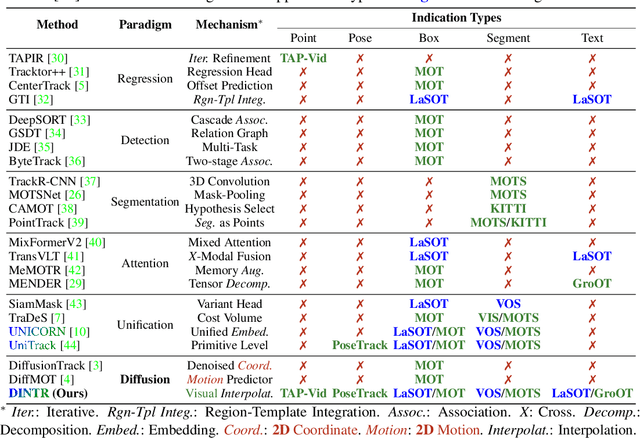


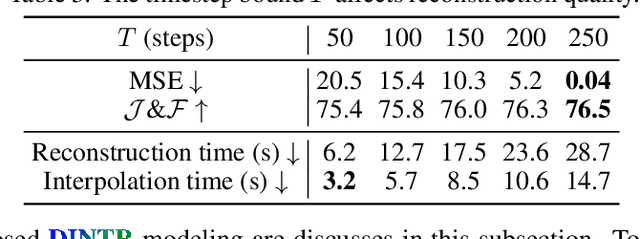
Abstract:Object tracking is a fundamental task in computer vision, requiring the localization of objects of interest across video frames. Diffusion models have shown remarkable capabilities in visual generation, making them well-suited for addressing several requirements of the tracking problem. This work proposes a novel diffusion-based methodology to formulate the tracking task. Firstly, their conditional process allows for injecting indications of the target object into the generation process. Secondly, diffusion mechanics can be developed to inherently model temporal correspondences, enabling the reconstruction of actual frames in video. However, existing diffusion models rely on extensive and unnecessary mapping to a Gaussian noise domain, which can be replaced by a more efficient and stable interpolation process. Our proposed interpolation mechanism draws inspiration from classic image-processing techniques, offering a more interpretable, stable, and faster approach tailored specifically for the object tracking task. By leveraging the strengths of diffusion models while circumventing their limitations, our Diffusion-based INterpolation TrackeR (DINTR) presents a promising new paradigm and achieves a superior multiplicity on seven benchmarks across five indicator representations.
KnobGen: Controlling the Sophistication of Artwork in Sketch-Based Diffusion Models
Oct 02, 2024


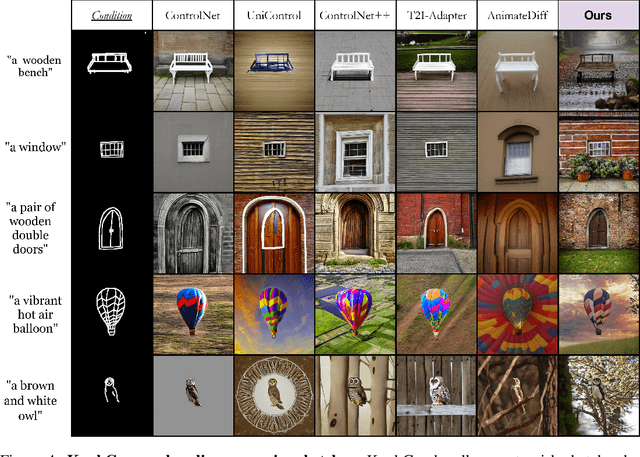
Abstract:Recent advances in diffusion models have significantly improved text-to-image (T2I) generation, but they often struggle to balance fine-grained precision with high-level control. Methods like ControlNet and T2I-Adapter excel at following sketches by seasoned artists but tend to be overly rigid, replicating unintentional flaws in sketches from novice users. Meanwhile, coarse-grained methods, such as sketch-based abstraction frameworks, offer more accessible input handling but lack the precise control needed for detailed, professional use. To address these limitations, we propose KnobGen, a dual-pathway framework that democratizes sketch-based image generation by seamlessly adapting to varying levels of sketch complexity and user skill. KnobGen uses a Coarse-Grained Controller (CGC) module for high-level semantics and a Fine-Grained Controller (FGC) module for detailed refinement. The relative strength of these two modules can be adjusted through our knob inference mechanism to align with the user's specific needs. These mechanisms ensure that KnobGen can flexibly generate images from both novice sketches and those drawn by seasoned artists. This maintains control over the final output while preserving the natural appearance of the image, as evidenced on the MultiGen-20M dataset and a newly collected sketch dataset.
MobileUNETR: A Lightweight End-To-End Hybrid Vision Transformer For Efficient Medical Image Segmentation
Sep 04, 2024
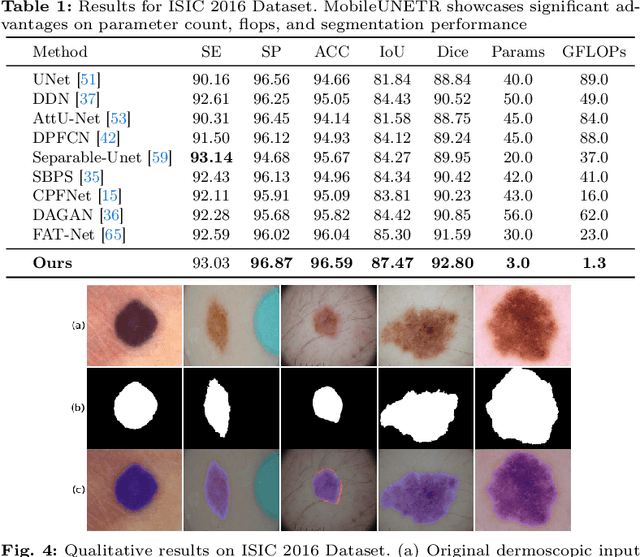
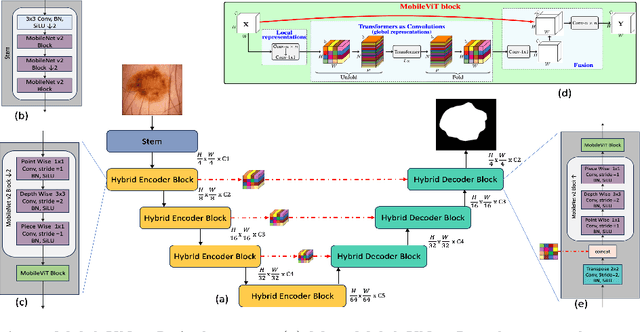
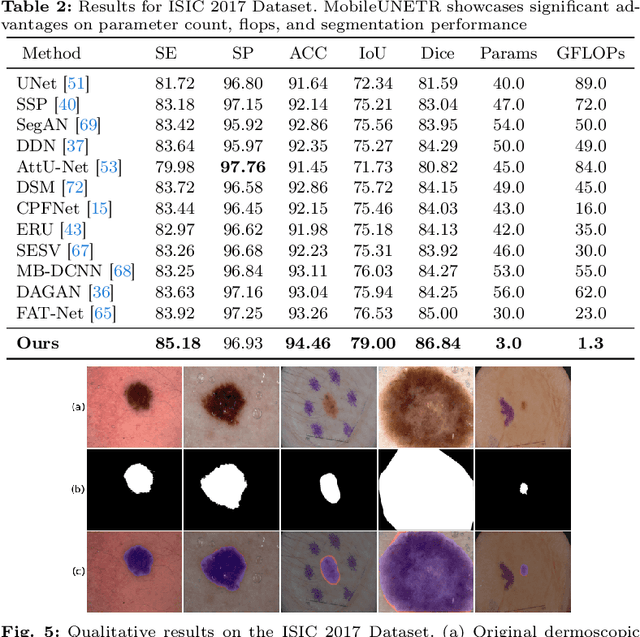
Abstract:Skin cancer segmentation poses a significant challenge in medical image analysis. Numerous existing solutions, predominantly CNN-based, face issues related to a lack of global contextual understanding. Alternatively, some approaches resort to large-scale Transformer models to bridge the global contextual gaps, but at the expense of model size and computational complexity. Finally many Transformer based approaches rely primarily on CNN based decoders overlooking the benefits of Transformer based decoding models. Recognizing these limitations, we address the need efficient lightweight solutions by introducing MobileUNETR, which aims to overcome the performance constraints associated with both CNNs and Transformers while minimizing model size, presenting a promising stride towards efficient image segmentation. MobileUNETR has 3 main features. 1) MobileUNETR comprises of a lightweight hybrid CNN-Transformer encoder to help balance local and global contextual feature extraction in an efficient manner; 2) A novel hybrid decoder that simultaneously utilizes low-level and global features at different resolutions within the decoding stage for accurate mask generation; 3) surpassing large and complex architectures, MobileUNETR achieves superior performance with 3 million parameters and a computational complexity of 1.3 GFLOP resulting in 10x and 23x reduction in parameters and FLOPS, respectively. Extensive experiments have been conducted to validate the effectiveness of our proposed method on four publicly available skin lesion segmentation datasets, including ISIC 2016, ISIC 2017, ISIC 2018, and PH2 datasets. The code will be publicly available at: https://github.com/OSUPCVLab/MobileUNETR.git
CYCLO: Cyclic Graph Transformer Approach to Multi-Object Relationship Modeling in Aerial Videos
Jun 03, 2024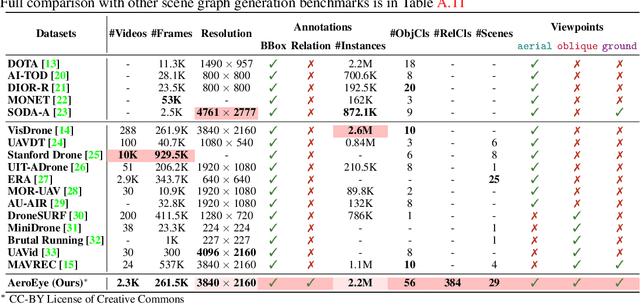
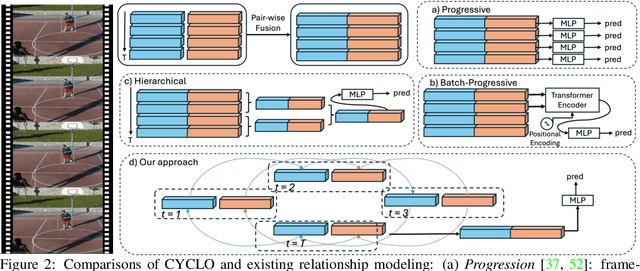

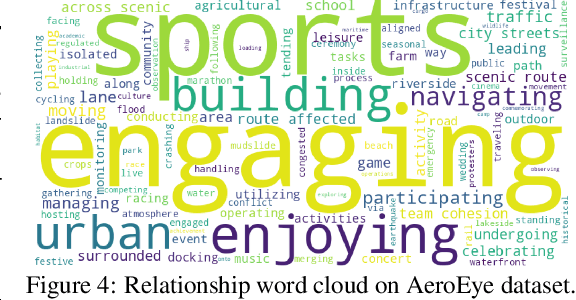
Abstract:Video scene graph generation (VidSGG) has emerged as a transformative approach to capturing and interpreting the intricate relationships among objects and their temporal dynamics in video sequences. In this paper, we introduce the new AeroEye dataset that focuses on multi-object relationship modeling in aerial videos. Our AeroEye dataset features various drone scenes and includes a visually comprehensive and precise collection of predicates that capture the intricate relationships and spatial arrangements among objects. To this end, we propose the novel Cyclic Graph Transformer (CYCLO) approach that allows the model to capture both direct and long-range temporal dependencies by continuously updating the history of interactions in a circular manner. The proposed approach also allows one to handle sequences with inherent cyclical patterns and process object relationships in the correct sequential order. Therefore, it can effectively capture periodic and overlapping relationships while minimizing information loss. The extensive experiments on the AeroEye dataset demonstrate the effectiveness of the proposed CYCLO model, demonstrating its potential to perform scene understanding on drone videos. Finally, the CYCLO method consistently achieves State-of-the-Art (SOTA) results on two in-the-wild scene graph generation benchmarks, i.e., PVSG and ASPIRe.
A Probabilistic-based Drift Correction Module for Visual Inertial SLAMs
Apr 15, 2024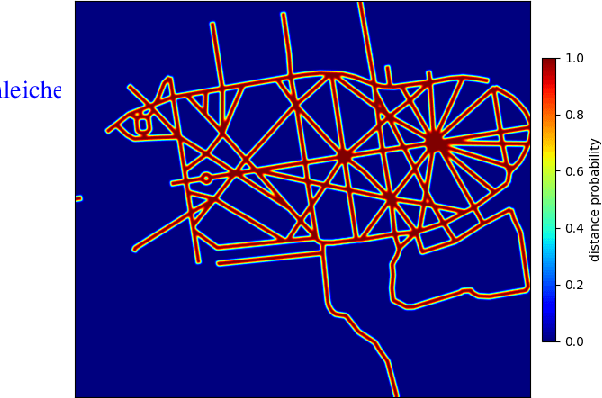

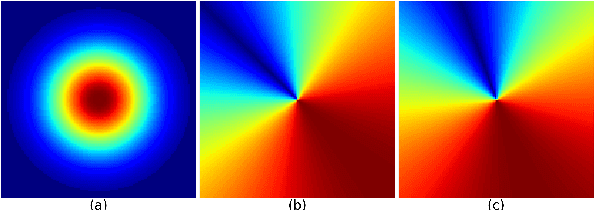
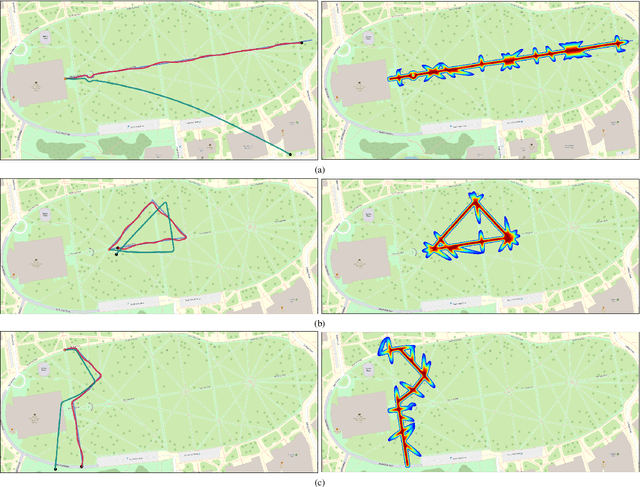
Abstract:Positioning is a prominent field of study, notably focusing on Visual Inertial Odometry (VIO) and Simultaneous Localization and Mapping (SLAM) methods. Despite their advancements, these methods often encounter dead-reckoning errors that leads to considerable drift in estimated platform motion especially during long traverses. In such cases, the drift error is not negligible and should be rectified. Our proposed approach minimizes the drift error by correcting the estimated motion generated by any SLAM method at each epoch. Our methodology treats positioning measurements rendered by the SLAM solution as random variables formulated jointly in a multivariate distribution. In this setting, The correction of the drift becomes equivalent to finding the mode of this multivariate distribution which jointly maximizes the likelihood of a set of relevant geo-spatial priors about the platform motion and environment. Our method is integrable into any SLAM/VIO method as an correction module. Our experimental results shows the effectiveness of our approach in minimizing the drift error by 10x in long treverses.
SegFormer3D: an Efficient Transformer for 3D Medical Image Segmentation
Apr 15, 2024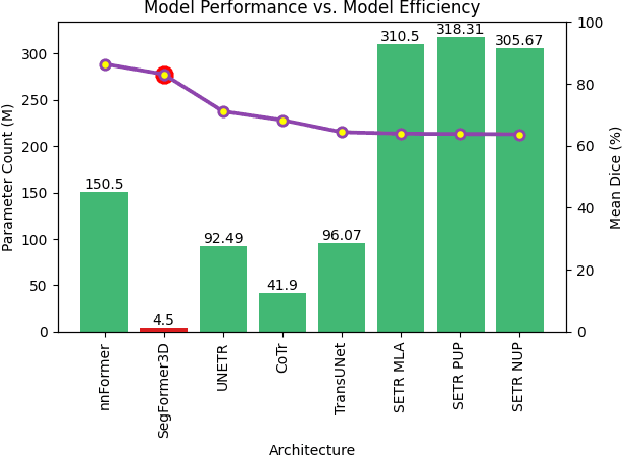
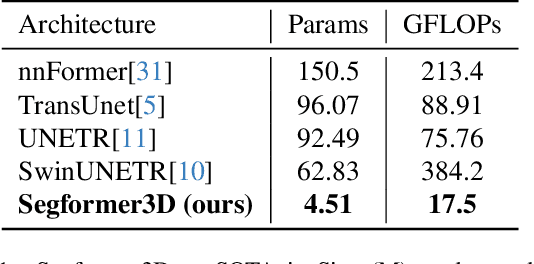
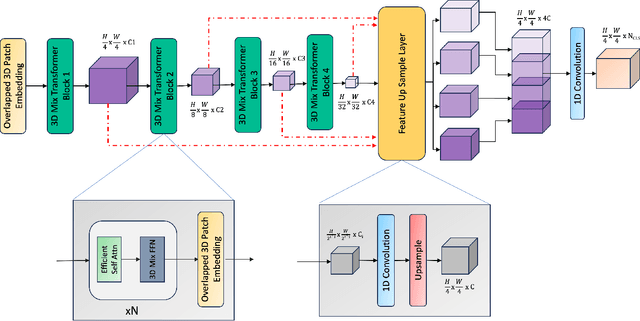
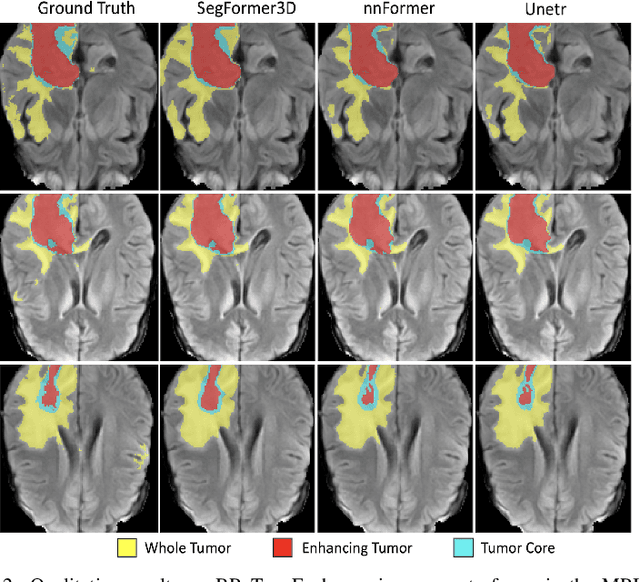
Abstract:The adoption of Vision Transformers (ViTs) based architectures represents a significant advancement in 3D Medical Image (MI) segmentation, surpassing traditional Convolutional Neural Network (CNN) models by enhancing global contextual understanding. While this paradigm shift has significantly enhanced 3D segmentation performance, state-of-the-art architectures require extremely large and complex architectures with large scale computing resources for training and deployment. Furthermore, in the context of limited datasets, often encountered in medical imaging, larger models can present hurdles in both model generalization and convergence. In response to these challenges and to demonstrate that lightweight models are a valuable area of research in 3D medical imaging, we present SegFormer3D, a hierarchical Transformer that calculates attention across multiscale volumetric features. Additionally, SegFormer3D avoids complex decoders and uses an all-MLP decoder to aggregate local and global attention features to produce highly accurate segmentation masks. The proposed memory efficient Transformer preserves the performance characteristics of a significantly larger model in a compact design. SegFormer3D democratizes deep learning for 3D medical image segmentation by offering a model with 33x less parameters and a 13x reduction in GFLOPS compared to the current state-of-the-art (SOTA). We benchmark SegFormer3D against the current SOTA models on three widely used datasets Synapse, BRaTs, and ACDC, achieving competitive results. Code: https://github.com/OSUPCVLab/SegFormer3D.git
A Review and Comparative Study of Close-Range Geometric Camera Calibration Tools
Jun 15, 2023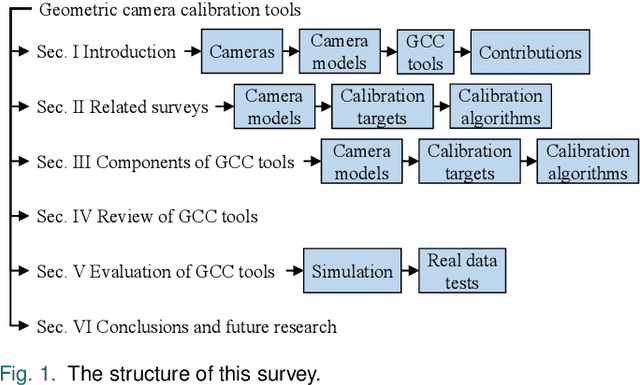
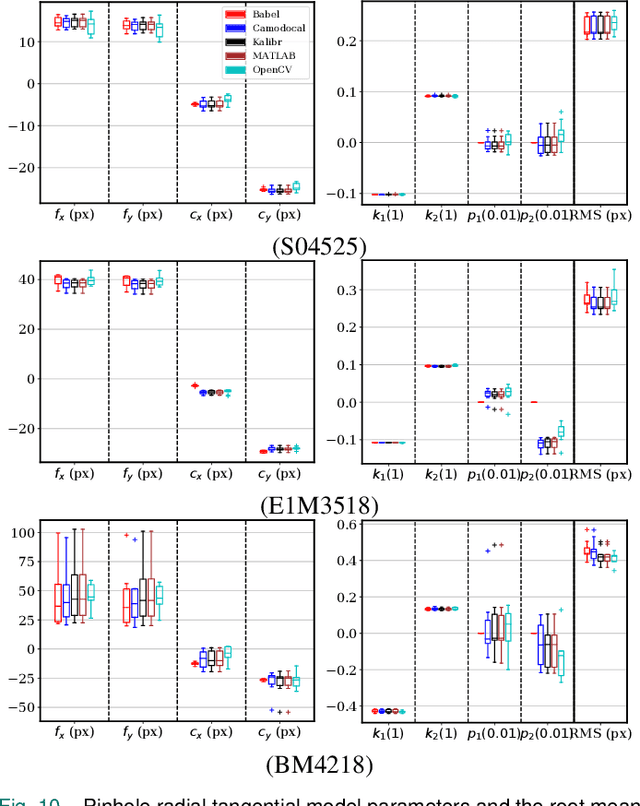
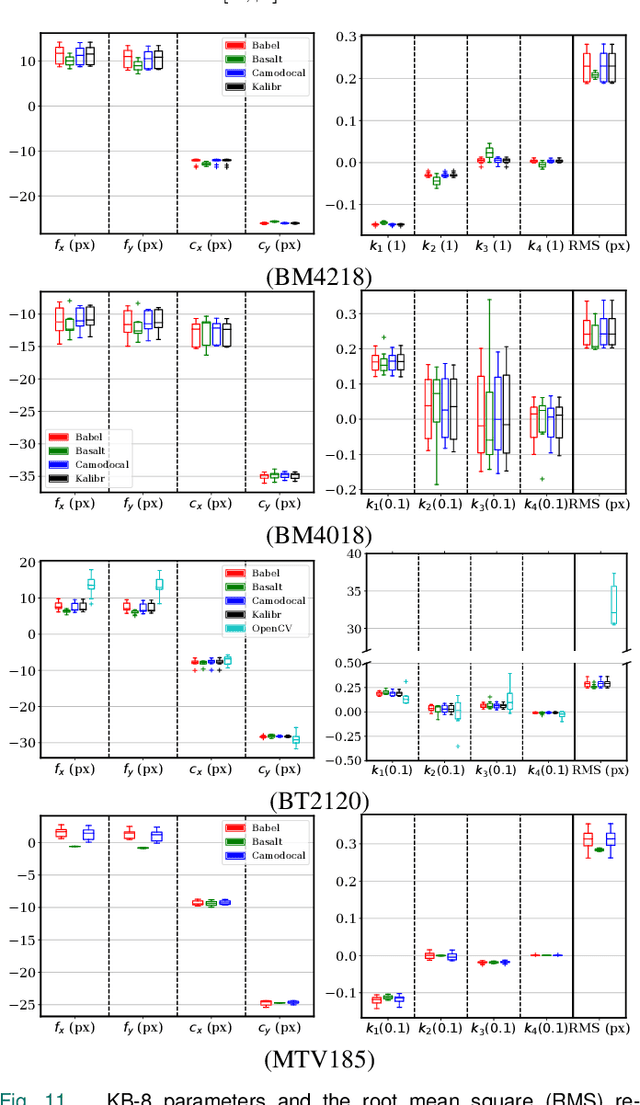
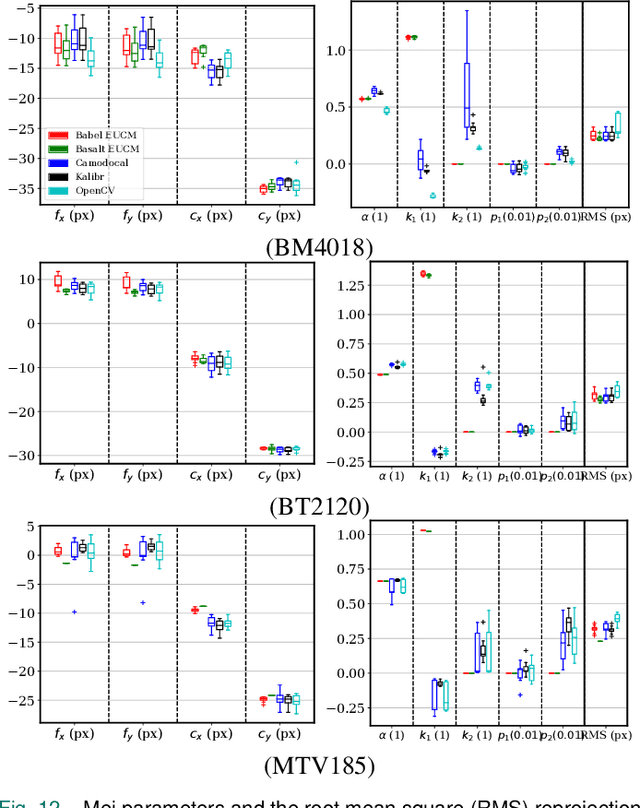
Abstract:In many camera-based applications, it is necessary to find the geometric relationship between incoming rays and image pixels, i.e., the projection model, through the geometric camera calibration (GCC). Aiming to provide practical calibration guidelines, this work surveys and evaluates the existing GCC tools. The survey covers camera models, calibration targets, and algorithms used in these tools, highlighting their properties and the trends in GCC development. The evaluation compares six target-based GCC tools, namely, BabelCalib, Basalt, Camodocal, Kalibr, the MATLAB calibrator, and the OpenCV-based ROS calibrator, with simulated and real data for cameras of wide-angle and fisheye lenses described by three traditional projection models. These tests reveal the strengths and weaknesses of these camera models, as well as the repeatability of these GCC tools. In view of the survey and evaluation, future research directions of GCC are also discussed.
 Add to Chrome
Add to Chrome Add to Firefox
Add to Firefox Add to Edge
Add to Edge